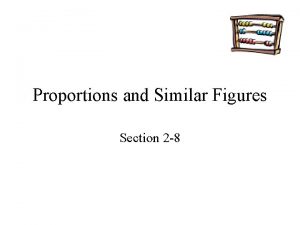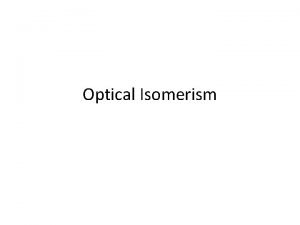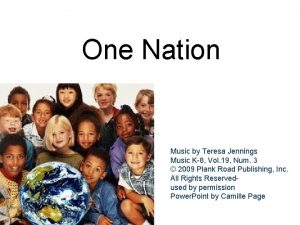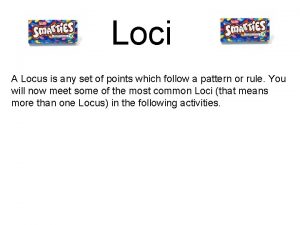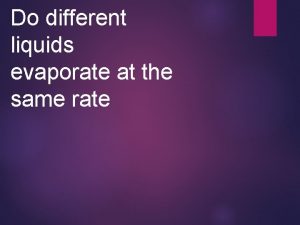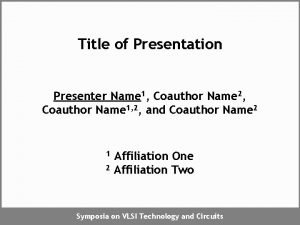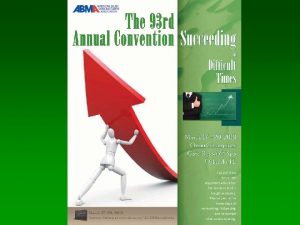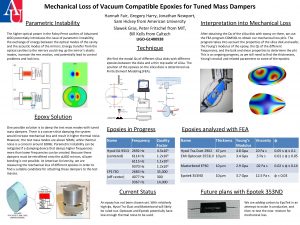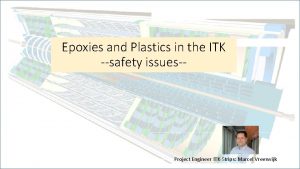All Epoxies Are Not The Same Presented to

















- Slides: 17


“All Epoxies Are Not The Same” Presented to Paint Applicator Division by Tony Ring


What is Epoxy? § The epoxide group, also termed as, oxirane or ethoxyline group, is a 3 member ring containing 2 carbons and an oxygen. § Epoxy resin is defined as a molecule containing more than one epoxide group

Bis-A Epoxy § Most common epoxy resins are Diglycidyl Ethers produced from a reaction between Epichlorohydrin with Bisphenol A

Epoxy History § The first commercial attempts to prepare resins from epichlorohydrin occurred in 1927 in the United States. § Credit for the first synthesis of Bisphenol A based epoxy resins are shared by Dr. Pierre Castan of Switzerland Dr. S. O. Greenlee in the United States in 1936. § Hexion, Dow and Huntsman are the largest producers of Epoxy Resins in the US with many foreign suppliers as well.

Other Epoxy Types § Other important glycidyl epoxies made from various alcohol containing compounds Phenolics: Mono-functional diluents, Bis-F and Novalac Resins Glycols: Poly-functional diluents and Flexibilizers Alcohols: Mono-functional diluents § Another class of epoxies is cycloaliphatic and aliphatic resins. These are non glycidyl epoxies that are formed by peroxidation of olefinic double bonds. They are used in UV cured formulations and outdoor applications. They are a minor segment of the market

Curing Agents § The epoxy group reacts with various molecules commonly know as curing agents to form highly cross linked thermoset polymers § Common curing agents are: Amines Polyamides Amidoamines Anhydrides Lewis Acids Organic Acids Phenols Thiols

Epoxy Reaction § A typical epoxy amine Reaction is outlined below: The remaining nitrogen protons continue to react to form the final ridge 3 -D Network

Epoxy Properties of optimally formulated cured epoxy systems – – – Low shrinkage High shear and tensile strength Will bond to a large verity of substrates Low level of creep under sustained load Good thermal resistance Good electrical insulator Chemical and solvent resistance Stiffness Good gap filling properties Low or no VOCs present in formulations Wide formulation latitude possible Low cost to performance ratio

Property Modifications There are countless ways epoxy compound’s properties can be modified by adding various materials, such as: – – – – Mineral fillers (ex. talc, silica, alumina, etc. ) Flexibilizers Diluents (functional and external) Pigments Thickeners Accelerators Adhesion promoters – Impact modifiers – Tougheners

Property Modifications (cont) Modifications are made to: – Improve performance • Less rigid and brittle • Decrease cure time • Increased peel strength, etc. – – – Improve processing convenience Reduce health hazards Adjust mix ratios Reduced cure times and temperature for one part systems Reduce costs

Epoxy Applications Epoxy systems are widely used. Several applications areas are: Aerospace Electronics (FR-4) Industrial Assembly Transportation Paint Applicators Composites Flooring Filament Winding Pultrusion Countertops Coatings Primers Secondary Containment Marine Paints Can Coatings Coil Coatings Carbon And Glass Composites Tools, Molds, Dies Attachment Motor and Equipment Mounting Replace Welds and Metal Fasteners Castings Transformers

Formulating for Performance § Epoxy adhesives can be formulated to meet the performance requirements of almost any application § The key factor is to have the right epoxy for the application at hand § The formulator must understand the end use, application method and performance requirements. § With that knowledge, epoxies can be: Very rigid or flexible Fast curing or slow curing Very hard or soft Opaque or clear Very thick or thin Permanent or temporary Electrical isolator or conductor One part or two part Cured at room temperature, Cured underwater elevated temperature or with U. V. And the list goes on …. Light

“All Epoxies are NOT the Same”

Question and Answer Period

Fielco Adhesives 1957 Pioneer Rd. Huntingdon Valley, PA 19006 -2503 P: 215 -677 -8700 F: 215 -674 -1712 Toll Free: 800 -825 -7156 E: tring@fielco. com www. fielco. com Product Lines Bondaway Econoset Iris ® Odyssey Orion ® Mastergrip Masterweld Regency Surecure ® OUR ADHESIVES, OUR SERVICE, YOUR SOLUTION!
 Insidan region jh
Insidan region jh Similar
Similar Similar figures / proportion (level 1)
Similar figures / proportion (level 1) Same place same time
Same place same time Same place same passion
Same place same passion Same same
Same same Sadlier vocabulary workshop level d unit 1 synonyms
Sadlier vocabulary workshop level d unit 1 synonyms Love is not all
Love is not all Name three lines
Name three lines We are one nation yes we are one land
We are one nation yes we are one land All paths lead to the same destination
All paths lead to the same destination All humans are same
All humans are same All humans are same
All humans are same We are all different but the same
We are all different but the same The locus of all points that are the same distance
The locus of all points that are the same distance Do all liquids evaporate at the same rate
Do all liquids evaporate at the same rate Types of headlines in newspaper with examples
Types of headlines in newspaper with examples Name of presenter
Name of presenter


